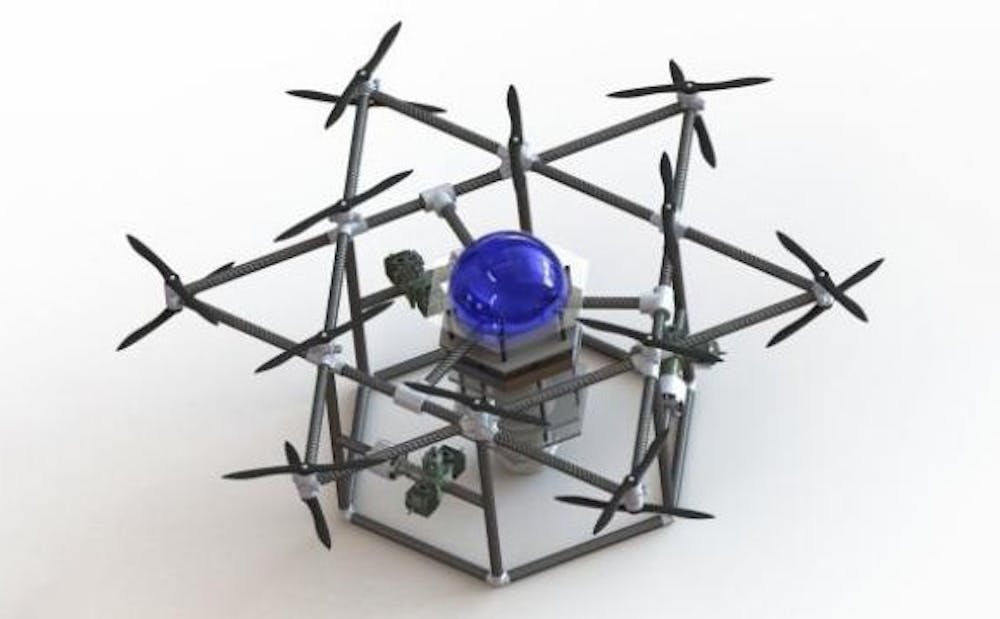Duke students and researchers are constructing robots to investigate the deepest depths of the ocean.
A team of 50 students will be competing to map the ocean floor with an autonomous robot that can move across the floor and trace chemical signals, all while submerged 4,000 feet below the surface. The group is led by Douglas Nowacek, associate professor of conservation technology in the Nicholas School of the Environment, along with Martin Brooke, associate professor of electrical and computer engineering, and Tyler Bletsch, assistant professor of electrical and computer engineering.
The competition, called the Shell Ocean Discovery XPRIZE, is sponsored by the oil and gas company Shell and the National Oceanic and Atmospheric Administration, with $7 million dollars up for grabs. Duke's team—called Blue Devils Ocean Engineering—was one of 21 research teams from around the world selected to compete earlier this year.
“What we’re developing are technologies that work in the world’s toughest environments,” said senior Henry Quach, who has participated in this research for two years.
The team includes graduate and undergraduate students from both the Nicholas School and the Pratt School of Engineering.
The competition's winner will be awarded $4 million, second place is worth $1 million and the ten teams that make it to the final round of the competition will split another $1 million. A $1 million bonus is given to the team whose robot proves best at tracing a chemical signal to its hidden position on the ocean floor.
Brooke noted that his team is passionate about its work and the connections between marine science and mechanical engineering.
“We just want to compete,” he said, “and we hope that we have created 50 or 60 students who are enthused and encouraged to work in the cross-section of the environment and science.”
The students have already spent three semesters working on the robot, which consists of deep-diving sonar imaging pods and a heavy-lifting drone. It depends on sonar signals to measure the surrounding ocean depth and map the intricacies of the ocean floor.
The project has implications that reach far beyond mechanical engineering and will also help with marine conservation, the team members explained.
To get involved in the project, students take elective classes such as this semester’s ECE 496 "Advanced Robotic System Design" and ECE 449 "Sensors and Sensor Interface Design."
Junior Lucia Jimenez described the inclusive nature of the team-based project.
“We’re very open to everyone trying out what they feel like,” she said. “We’re looking for people who are very passionate about this.”
Junior Sam Kelly described a few of the specific pieces of the project he worked on last semester, including getting the heavy-lifting drone to fly. He is currently working on a robotic retrieval system used to pick up the pods at the bottom of the ocean.
“Each of the technologies we work with is groundbreaking in itself,” Kelly said.
Get The Chronicle straight to your inbox
Signup for our weekly newsletter. Cancel at any time.

